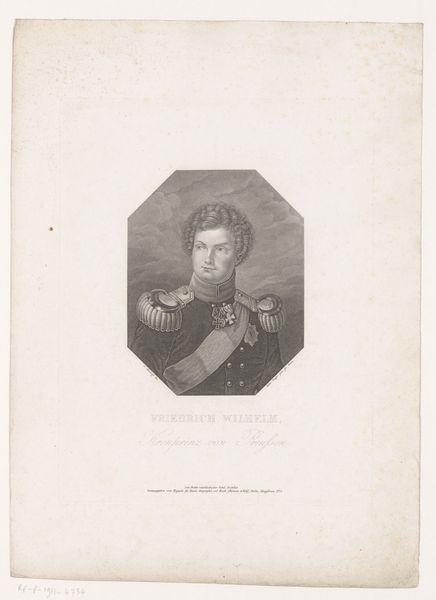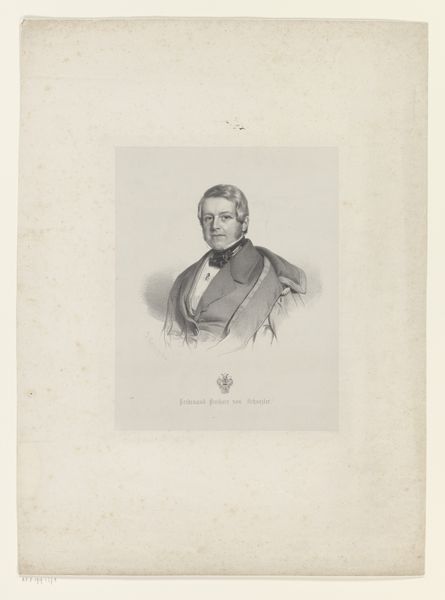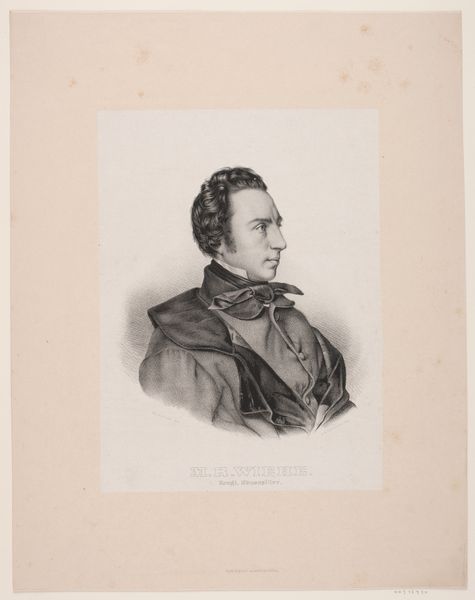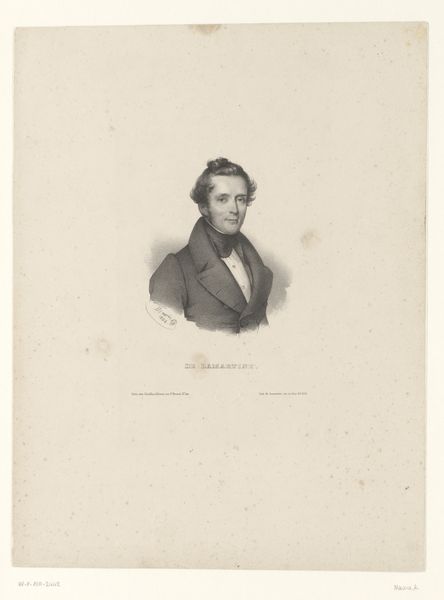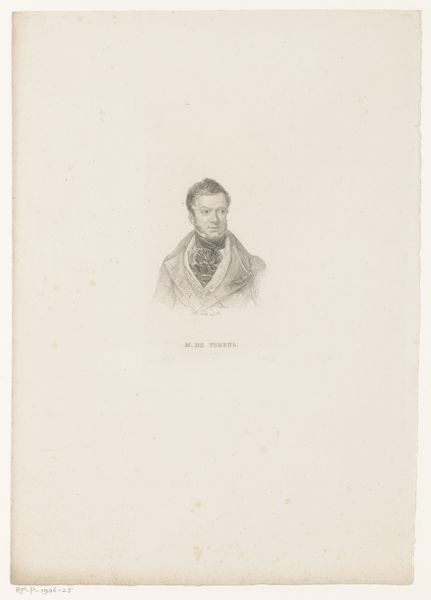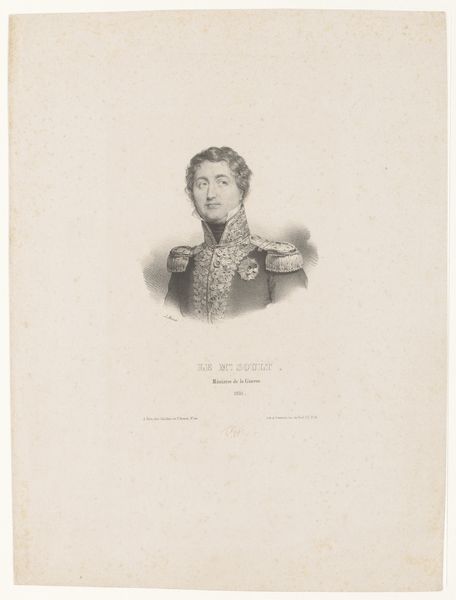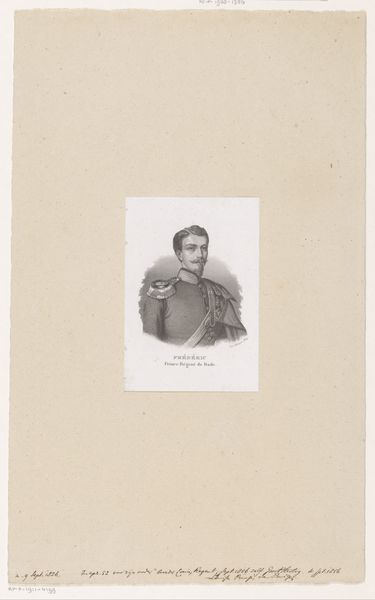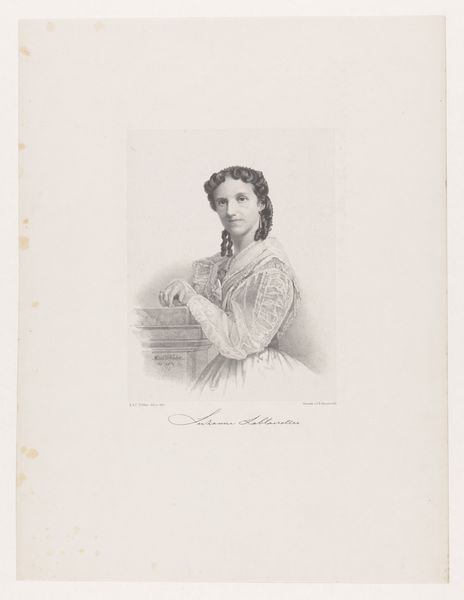
drawing, paper, engraving
#
portrait
#
pencil drawn
#
drawing
#
light pencil work
#
photo restoration
#
pencil sketch
#
paper
#
romanticism
#
engraving
Dimensions: height 382 mm, width 271 mm
Copyright: Rijks Museum: Open Domain
Curator: Here we have Nicolaas Pieneman’s "Portret van Jacob Hobein met vlag," dating roughly from 1831 to 1853. It’s a drawing on paper, or rather an engraving, currently held in the Rijksmuseum. Editor: My initial impression is one of slightly mournful nobility. There’s a certain softness to the lines that makes him look a bit vulnerable despite his rather imposing posture. The flag looks almost spectral, like a memory or aspiration. Curator: The spectral flag is indeed evocative. Pieneman employs the flag as a symbol of status and possibly patriotic identity, typical for portraits during the period of Romanticism. Notice the detail in his military attire, the meticulous depiction of the uniform and the medals, all adding layers to his persona. Editor: The rendering of those medals is superb; little sunbursts of meticulous linework. The man is more than the flag. To me the crossed arms project a defensiveness, a hidden anxiety perhaps at odds with the flag’s grand symbolism. What do you read in that body language? Curator: His crossed arms might suggest that psychological reading. It’s true. But the gesture was conventional for formal portraits of the era. It served to structure the composition. We must consider social conventions when analyzing such artworks. He's a man presented in his most honorable and respected form. Editor: Conventions aside, every pose leaks a little something genuine, don't you think? Look how gently his gaze rests. He feels more introspective than aggressively proud. The symbolism clashes beautifully with the quiet melancholy I perceive. Curator: And that contrast you pointed out between vulnerability and military bearing captures something interesting about the tensions of early 19th-century society—personal feelings set against public expectations. Pieneman manages to communicate not only the likeness but a particular cultural mood. Editor: He does, indeed. And looking at the gentle rendering and those soulful eyes I want to believe that his is more than just another face frozen in the formality of patriotic convention. Curator: I agree. Art allows for precisely these layers of meaning, individual and cultural. The artwork allows us a peep-hole into history! Editor: Precisely! Now that's what a truly thought-provoking visit to the museum should look like.
Comments
No comments
Be the first to comment and join the conversation on the ultimate creative platform.
